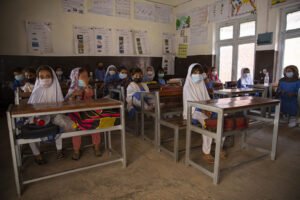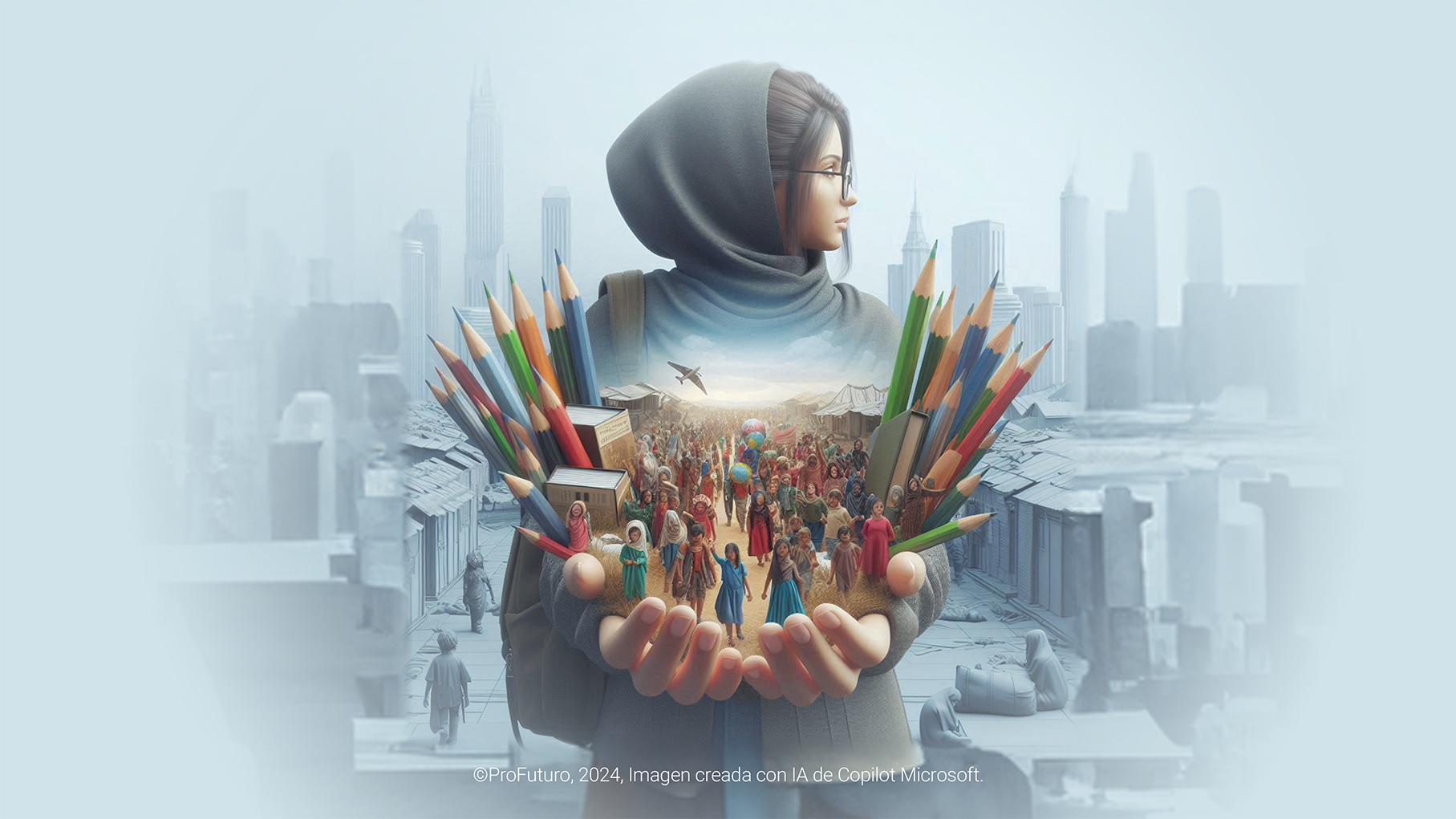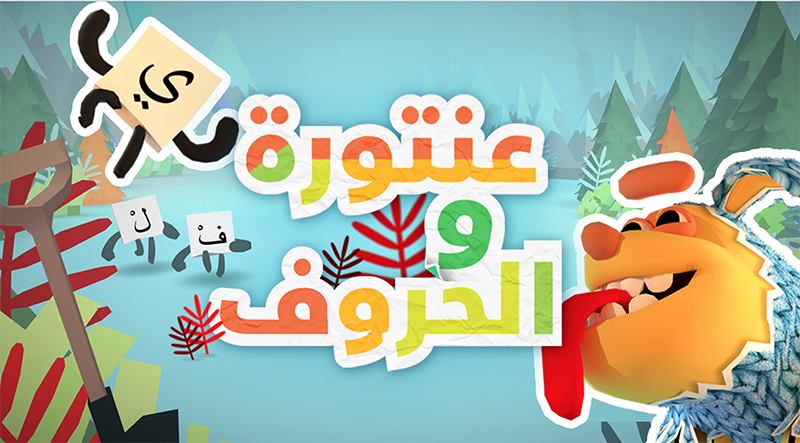
Image: ACNUR/Shaina Bashir.
Did you know that a refugee person spends an average of 17 years in reception camps? This means that many children spend most of their childhood and adolescence in these environments. These camps are where they will grow up and, as such, have a decisive influence on their education.
Education is a fundamental tool for the development of refugee children. It is not only the most valuable resource they can be equipped with for their future, but also a pathway to building better societies. A UNESCO report states that nearly 170 million people worldwide could escape poverty if children from impoverished countries left school with basic literacy skills, that is, having completed the first levels of primary education.
However, according to UNICEF, the number of displaced and refugee children exceeds 50 million. Of these, almost 15 million are of school age, and according to UNHCR, half of them, that is, more than seven million, do not receive an education. Save the Children also tells us that one in five children worldwide (approximately 420 million) live in war zones.
Attending school allows displaced children to experience their childhood and adapt better to their new reality.
Education Saves Lives
When children do not go to school, they are at a higher risk of abuse, exploitation, and recruitment by armed groups. Moreover, in the midst of conflict, education becomes a priority for children who, when asked what they need most, respond that they want to continue their education.
In its report “Refugee Children’s Education: A Window to the Future”, UNHCR lists some of the benefits that education brings to these children:
- Personal Development: Education helps children discover their abilities and skills, essential for their future professional life.
- Childhood Recovery: Attending school allows displaced children to experience their childhood and adapt better to their new reality.
- Protection and Safety: Schools in refugee camps protect children from everyday dangers in these environments.
- Autonomy for Mothers: Mothers can engage in economic and educational activities while their children are in school, improving family survival.
- Liberation of Older Siblings: Older siblings are freed from the responsibility of caring for younger ones, allowing them to attend school and gain independence.
Challenges of Education in Refugee Settings
Refugee children face serious and varied challenges in accessing quality education on equal terms with other children:
- Shortage of Teachers: The demand for teachers in refugee camps is high, and often, even with the support of volunteer teachers, educational needs are not met. The lack of qualified teaching staff affects the quality of education, hindering the children’s academic and personal development.
- Insufficient and Poorly Equipped Classrooms: Every day, new children join classes in refugee camps, creating the need to build more classrooms. These classrooms must be adequately equipped with desks, blackboards, latrines, and spaces for cleaning and hygiene. Without these facilities, it is difficult to provide a suitable and safe learning environment.
- Lack of Food Resources: Schools for refugee children often lack the budget to provide at least one daily meal or snack. Malnutrition and lack of adequate food negatively affect children’s ability to concentrate and learn, as well as their overall health.
- Absence of School Supplies: Donations and recycled materials that reach the camps are insufficient. Many children do not have access to notebooks, books, pencils, crayons, and other common school items. They also lack uniforms and footwear, which can affect their self-esteem and desire to attend school.
- Lack of Extracurricular Activities: Scarce resources also prevent the implementation of after-school activity programs. These activities could benefit children’s social and emotional development, providing a constructive use of their free time and helping them forget, at least temporarily, the difficulties of their situation.
- Discrimination: In some cases, families prevent their children from attending camp schools to avoid sharing space with people of different beliefs or ideologies. This discrimination can limit educational opportunities and perpetuate intolerance and conflict.
- Negative Cultural Perceptions of Education: Some parents do not value education, especially for girls. They ignore calls from aid agencies for their children to attend refugee camp schools. Teachers must combat many persisting prejudices about education and teaching methods, making it difficult to include all children in the educational system.
- Early Marriages and Pregnancies: Early pregnancies and marriages sponsored by families are significant obstacles for adolescents to join educational programs for refugees. Becoming mothers or wives, girls and adolescents see their educational options significantly reduced, perpetuating the cycle of poverty and lack of opportunities.
What Are We Doing to Overcome These Obstacles?
- ProFuturo’s Humanitarian Context Model: In 2017, ProFuturo began adapting its Digital Education program to crisis contexts to favour access to quality digital education for these children in camps, reinforcement centres, and informal settlements in urban or rural settings. The model has a holistic approach, based on standards offered by the Inter-Agency Network for Education in Emergencies (INEE), but also pays special attention to teacher training, a cornerstone of the Foundation’s programs. ProFuturo offers training, support, and continuous assistance to teachers to promote the integration of technology into the teaching process. This is important because it strengthens teachers’ capacity and confidence to use digital resources in the classroom and provides engaging learning opportunities for students. It also focuses on community involvement and offers psychosocial support, as well as educational materials.
- INEE’s Training Package for Primary School Teachers in Emergency Situations: This training package responds to a critical lack of open-source, competency-based teacher training materials that cover the essential knowledge and skills needed by teachers in crisis contexts, where teacher training is often limited to ad hoc workshops. It offers basic content on the teacher’s role and well-being; children’s protection, well-being, and inclusion; pedagogy; curriculum and planning; and subject knowledge.
- Borderless Higher Education for Refugees (BHER): BHER offers accredited university programs to local teachers working and untrained in refugee camps in southern Kenya. The project focuses on educating refugees trapped in prolonged exile in the city of Dadaab, who have been in an underserved region for over 15 years where resources and support for learning are scarce. By developing the capacity of refugee and local teachers and leaders, they can improve education and implement local solutions in the camps and the community. It uses a blended learning formula, combining online learning and face-to-face instruction, through a series of lectures given by external professors who visit Dadaab after their classes and during school holidays.
- Thaki: Digital Literacy for Children in Refugee Situations: Created by a woman who was herself a refugee child, Thaki is an initiative that offers devices and digital educational content to refugee children and youth to promote their digital literacy and unlock their future potential. It is based on a simple process: they collect used computers donated by companies that no longer need them, load them with high-quality, interactive, multilingual educational software and content available offline, and deliver them directly to refugees for use in their education: children, but also university students and scholars.
- Antura and the Letters: Playing for Peace in Syria: Antura is a puppy that helps Syrian children learn letters and complete a basic literacy curriculum in English and Arabic. Antura and the Letters is an educational game created in collaboration by Cologne Game Lab, Wixel Studios, and Video Games Without Borders, aiming to teach the Arabic language and support the learner’s well-being. The game contains six travel maps, corresponding to the six main stages of the Syrian primary school curriculum.
- Educating for Peace: A Vital Need: Although education does not cause wars, nor does it end them, educational systems often contribute to creating conditions conducive to armed conflict and can also help create more peaceful, cohesive, and resilient societies, thereby avoiding the return of violence. This is stated by UNESCO. Therefore, at ProFuturo, we believe that education for peace and global citizenship is as important today as Mathematics or literacy. Critical thinking, collaboration, teamwork… Because today more than ever, we need citizens committed to peace. Education for Sharing and ProFuturo have partnered to create Club 2030, an educational proposal to develop, from digital, key competencies that promote global citizenship, helping to build more peaceful and just societies for all.






